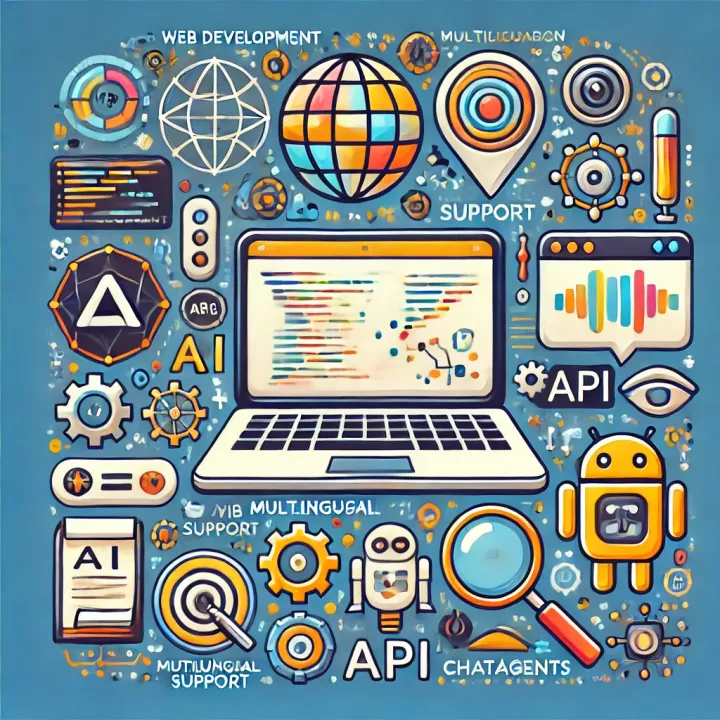Summary of "Building Effective Agents" by Anthropic

Link to the article: https://www.anthropic.com/research/building-effective-agents
One Paragraph Summary
Agents are systems where Large Language Models (LLMs) dynamically direct their own processes and tool usage, maintaining control over how they accomplish tasks. They can start with a command or interactive discussion, and then gain "ground truth" from the environment, such as tool call results, to assess their progress. Agents may pause for human feedback or when encountering blockers, and can be used for open-ended problems where it’s difficult to predict the required steps. Key considerations when developing agents include: ensuring the agent gains "ground truth" from the environment at each step, incorporating human oversight at checkpoints, and designing toolsets with clear documentation. Agents are most effective for tasks that require both conversation and action, have clear success criteria, enable feedback loops, and integrate meaningful human oversight.
How I feel After Reading
I observed that the definition of an AI agent closely resembles the way a knowledge worker functions in a corporate setting. A worker acts as an agent of the company, directing their own processes and tool usage to achieve a specific assigned goal. These problems are often open-ended and require long-term planning. At times, the worker seeks or receives feedback from managers, which serves as an oversight. Workers receive rewards such as salary and bonuses, and the company also provides various toolsets to facilitate their work. The discussion of AI alignment prompts a reflection on the concept of alignment within an organization and the potential conflicts between different internal motivations.
Agents vs. Workflows: A Definition
Workflows:
- Workflows use predefined code paths to orchestrate Large Language Model (LLM) calls and tools.
- They are best suited for predictable tasks with well-defined steps or subtasks.
Agents:
- Agents use LLMs to dynamically determine tool usage and task completion strategies, often through iterative processes.
- They offer greater flexibility but can be more expensive, slower, and prone to accumulating errors.
When to Use Agents (and When Not To)
- Agents are most effective for:
- Open-ended tasks.
- Tasks with multiple potential steps.
- Tasks requiring dynamic adaptation and decision-making.
- Tasks that benefit from iterative refinement.
- Workflows (or a single LLM call) are often sufficient for straightforward tasks with clearly defined boundaries.
- Trade-offs: Agents may achieve superior performance but typically come with increased latency and complexity.
Frameworks: To Use or Not to Use
- Popular Frameworks: Examples include LangGraph (LangChain), Amazon Bedrock’s AI Agent, Rivet, and Vellum.
- Benefits:
- They offer "starter kits" for chaining calls.
- They facilitate tool definition.
- They aid in building agentic systems.
- Drawbacks:
- They introduce abstraction layers that can hinder debugging.
- They may encourage over-complication.
- Recommendation:
- Begin with direct API calls to understand the prompt-response mechanism.
- Adopt frameworks only if they address specific needs and streamline development.
Building Blocks for Workflows and Agents
Workflows
- Augmented LLM:
- This involves a single LLM call enhanced with retrieval, tools, memory, or other augmentations.
- It is crucial to design clean, well-documented interfaces for these capabilities.
- Prompt Chaining:
- This decomposes tasks into sequential LLM calls (e.g., outline creation → validation → final write-up).
- It is ideal when a problem can be broken down into fixed subtasks.
- Routing:
- This classifies an input and directs it to specialized workflows or prompts.
- It is useful for handling diverse input types (e.g., different customer service issues).
- Parallelization:
- This splits tasks into independent parts (sectioning) or runs multiple attempts (voting).
- It speeds up processing or improves accuracy by leveraging diverse outputs.
- Orchestrator-Workers:
- A central LLM (the "orchestrator") delegates subtasks to specialized "worker" LLMs.
- This is suitable for tasks where the number or nature of subtasks cannot be predetermined (e.g., complex coding changes).
- Evaluator-Optimizer:
- One LLM generates an output, and another LLM evaluates or critiques it.
- The first LLM then revises its output.
- Iteration continues until the output meets predefined quality criteria.
Agents
Autonomous Operation: Agents plan and execute tasks independently, potentially seeking human guidance when necessary.
Key Considerations:
- Ground Truth: Agents must validate their progress using environmental feedback.
- Human Oversight: Implementing checkpoints and clear stopping conditions is crucial.
- Clear Toolsets: Well-defined and appropriate tools are essential for successful agent operation.
Implementation Considerations
- Trust and Guardrails: Given their potential power, agents should be rigorously tested in sandboxed environments, particularly when interacting with critical systems.
- Stopping Criteria: To prevent infinite loops, implement clear stopping conditions, such as limiting the number of steps or requiring human checkpoints.
- Tool Design: Well-documented and intuitive "agent-computer interfaces" (ACIs) are crucial for effective agent operation and significantly improve outcomes.
Conclusion
- Prioritize Simplicity: Avoid adopting agentic systems if simpler approaches, such as single LLM calls or basic workflows, are adequate.
- Ensure Transparency: Make the agent's reasoning and tool utilization clear and understandable whenever feasible.
- Refine Tools and Interfaces Iteratively: The design of a well-considered ACI (agent-computer interface) is often more impactful than the prompt itself.
- Implement Continuous Evaluation: Employ monitoring, testing, and well-defined success metrics to assess whether increased complexity leads to tangible improvements in results.



Comments ()